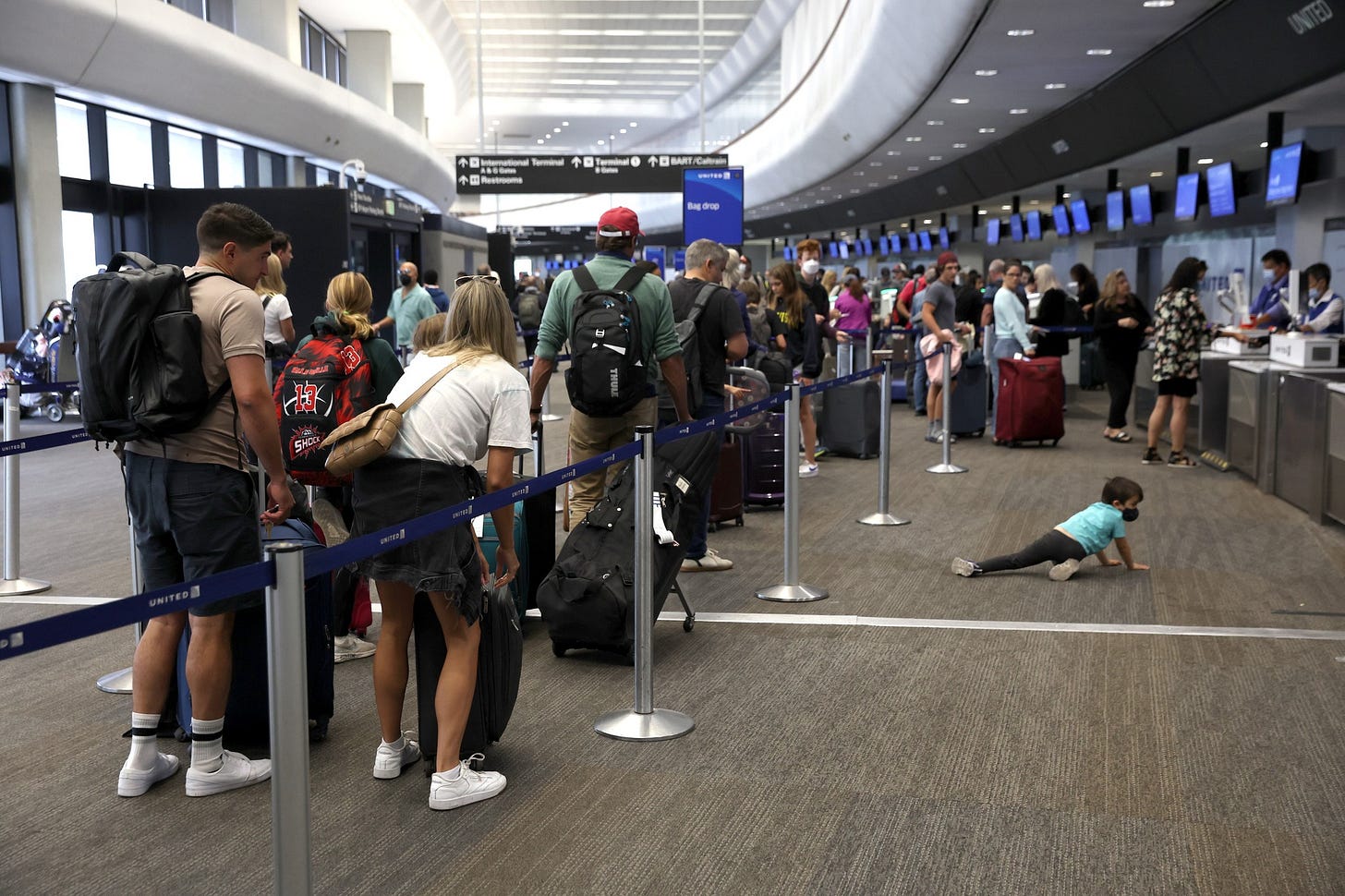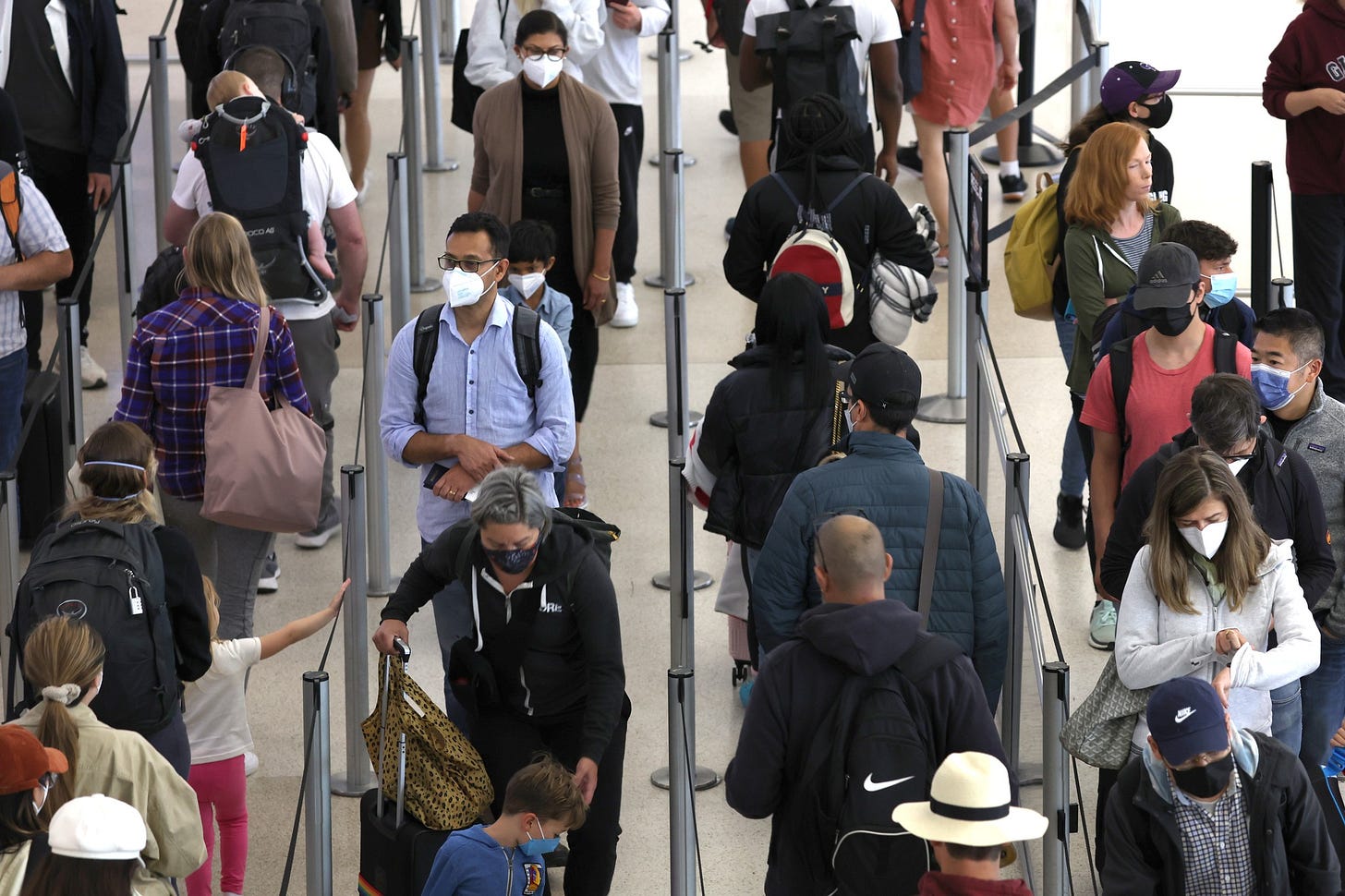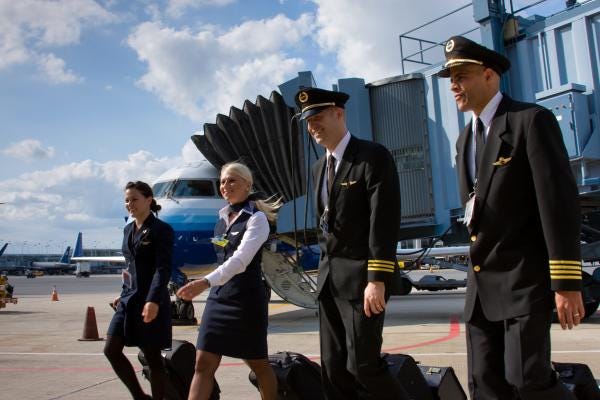
Full Throttle posts twice a week. It's free. Please share and subscribe here. Extended interview on fall flying is here.
The summer travel nightmare for flyers ended after Labor Day, right? Not necessarily. The number of flyers declined as summer came to an end, but it is not business as usual if you travel by air. Passengers will continue to see many of the troubles that plagued the airlines before Labor Day. Those issues have not disappeared and are impacting airlines’ plans.
One of the biggest challenges for airlines during any summer is the weather, which airlines can’t control. There were plenty of weather events in the past three months, but many of the difficulties for the air carriers in 2022 were self-inflicted.

(Credit: Getty Images)
Airline and travel expert Henry Harteveldt was blunt about the airlines’ summer performance. “Never, ever have I seen a summer like the one we have just come through. It has been an operational disaster. It has been embarrassing for airlines. It has been frustrating for travelers.”
WHAT HAPPENED?
The reasons for the summer trouble are now generally accepted. There was a shortage of pilots and other workers, including FAA air traffic controllers. So many Americans wanted to fly that airlines saw a lot of “revenue to capture” and stretched their schedules.

After the disaster of Memorial Day weekend when 7,000 flights were canceled, airlines cut their schedules, knowing they couldn’t have another repeat. “I get that airlines want to make up for the terrible losses they experienced in 2020 and 2021. But they did themselves no favors this summer,” Harteveldt told me.
FEWER FLIGHTS FOR NOW
The reduced schedules are not going away anytime soon. “What they're doing is operating well below their limits. They are scheduling fewer flights in order to have more of a buffer of more aircraft available when things go wrong,” Harteveldt said. The airlines are also keeping crews in reserve, which will allow airlines to recover more quickly from a weather or mechanical problem.
Airline plans for growth, or even returning to 2019 levels, are being put on the back burner. One airline source told me his carrier won't schedule aggressively this fall so the airline can get back on track. The airlines will use the fall to try to “regain passenger trust.”
SMALL MARKETS SUFFER
The bad news of this hangover from that terrible summer will hit smaller markets the hardest. The airline source says while schedules will grow more slowly, smaller markets may not even see flights. Harteveldt agrees, saying, “By the end of this year, more than 50 cities in the country will have lost all of their regional airlines.”

(Credit: Skywest)
So the airlines will limp along this fall, trying to convince you that they can get you to where you want to go. Airlines still need to grow their schedules to get back to pre-pandemic levels. Some airlines say they are running about 90% of passenger levels in 2019. “Business travel, domestically, is maybe at best 70% recovered. Some say it's closer to 60%. Long haul international business travel is maybe, at best, half recovered,” according to Harteveldt.
Air travel expert Henry Harteveldt on how airlines are trying to recover for the troubled summer season. Extended interview is here.
If you fly this fall it is possible you will pay less for the same flight you took in the summer. With the reduced schedules, and planes and crews in reserve, there is a better chance you’ll get there on time. Closer to normal for some flyers.
But back to normal for the airlines is on hold with fewer flights as they try to win back your trust. Getting back to 2019 levels of flights for the airlines is likely going to have to wait until at least sometime early next year.
Please share and subscribe here.
Extended interview on fall flying is here.
(Cover image credit: Getty Images)




